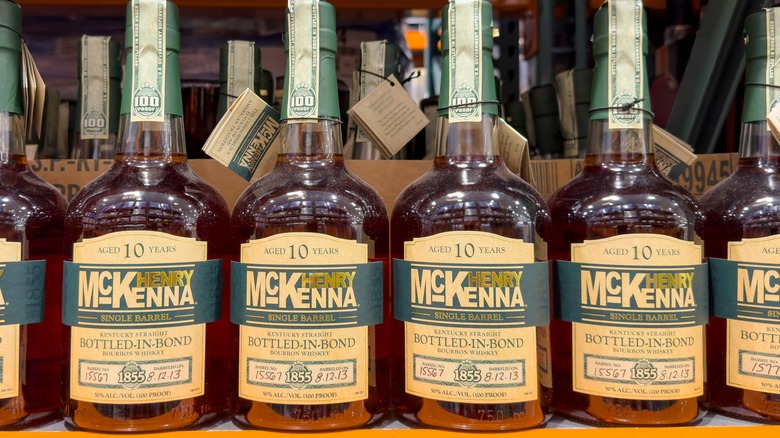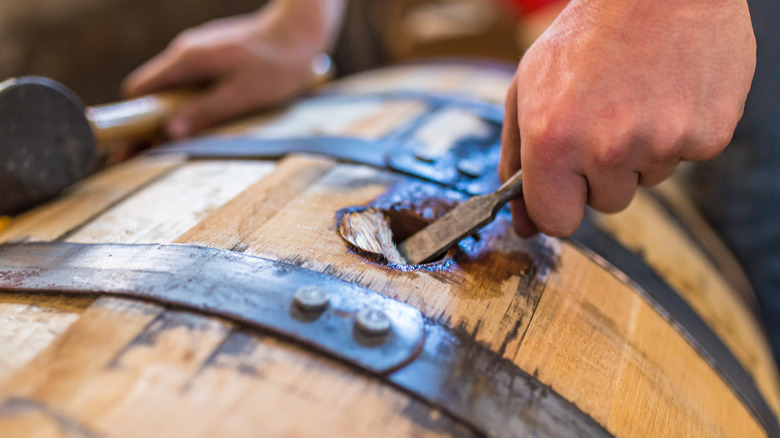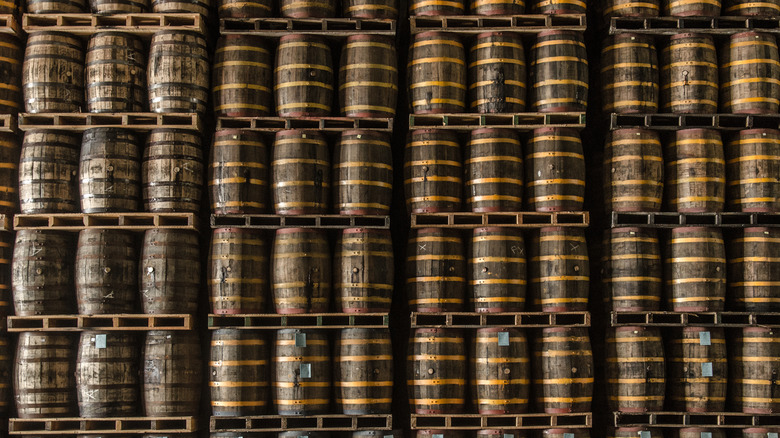What, Exactly, Is Bonded Whiskey?
There's a wealth of information to pick up along your whiskey-drinking journey, including understanding why there's variations in the way that it's spelled, and another term you might see as you go along is "bottled-in-bond," otherwise known as "bonded" whiskey. You'll notice that if that term's on an American spirit bottle's label, there's never an explainer to go along with it. But if you see that particular term, it means that this whiskey follows a certain set of guidelines for aged spirits that ensure a certain level in quality, created in 1897 thanks to the Bottled in Bond Act.
That's because back then, moonshine posed a genuine health risk if you were consuming it. Unscrupulous producers would adulterate their products with things that could potentially harm its consumers (think gasoline or methanol), and the Bottled in Bond Act ensured that a bottle marked as such was guaranteed to be a safe and quality product.
The rules for bottled-in-bond whiskey
In order to be officially considered bottled-in-bond, American aged spirits like bourbon and rye whiskeys have to satisfy multiple criteria. First, it has to be bottled at a 50% alcohol by volume (100 proof) minimum, which is why bonded whiskeys tend to be strong. Then, it also has to be made by a single distillery in a single distillation season, which is designated by spring or fall. The whiskey also needs to be aged for at least four years, and it has to be done so in a U.S. bonded warehouse, which is where it's aged tax-free until it goes out the door for distribution.
Although the bottled-in-bond designation now sounds a little old-timey, it's still an indicator of how much effort was put into making these spirits at a certain level. Is it likely you'll find actual doctored-up moonshine on your liquor store's shelves? No. But if you see the bottled-in-bond mark on what you're about to purchase, you at least have a good baseline on what to expect from the product. And if you're just scanning over the whiskey shelf, you now know that if you see that demarcation, that this booze selection is going to pack a pretty decent punch.
Is whiskey the only bonded spirit?
Although American whiskey is almost exclusively where you'll see the bonded labeling, there are a few exceptions where you might find a bonded spirit. One example is an apple brandy from Laird & Company. And a company called Privateer Rum once sold a bottled-in-bond rum (which no longer appears to be available for purchase on its website). So though it's not common, you can find aged bottled-in-bond spirits that are whiskey alternatives, should you want to explore something with those characteristics without being bourbon or rye whiskeys.
Producers of American spirits continue to embrace those standards; just take a close look at the label information on whiskey at a specialty liquor store, and you might find more bonded products than you previously knew about. And sure, there's also a marketing allure to that term, because it has a charming, anachronistic ring to it (I mean, I think it sounds cool), so there's that aspect to it as well. That designation isn't just for show, it's also to let you know that the distiller's set a standard for their product, one that harkens back to 1897 to ensure that you're actually getting what you're paying for.


